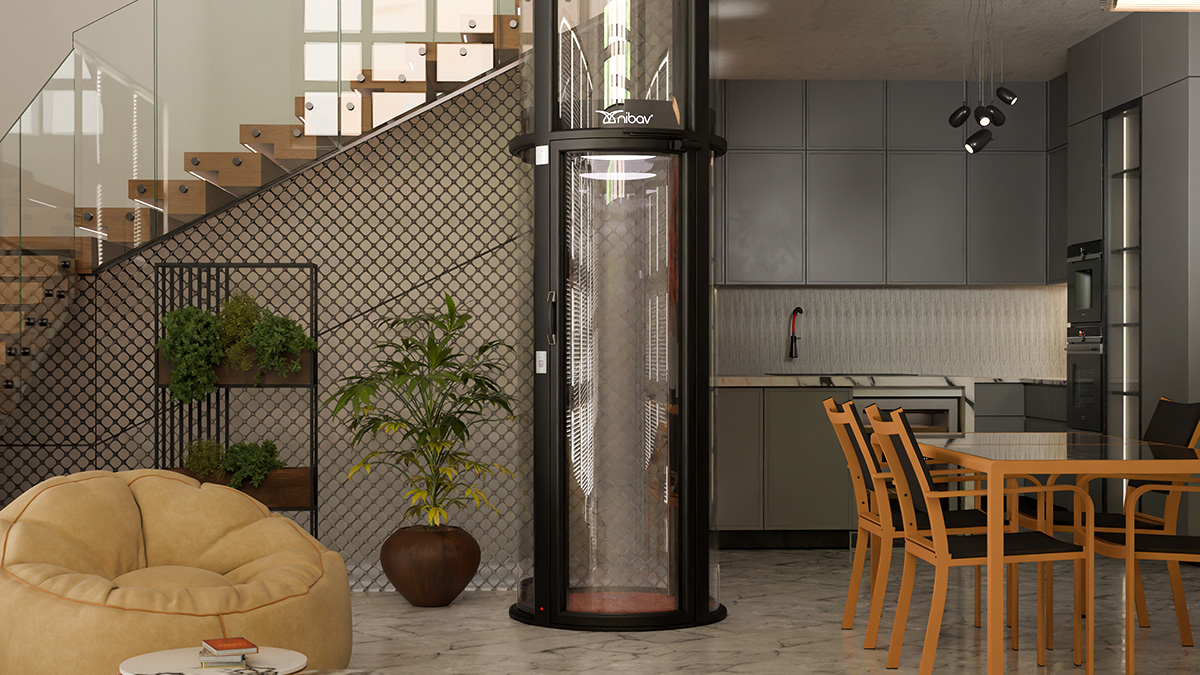
Table of Contents
Introduction: A New Era of Australian Residential Living
If you walk into a contemporary house in Australia today, you may notice a feature that, only a few years ago, was quite rare – a house lift. Previously associated with penthouses or grand estates, house lifts in Australia are now becoming a common addition to everyday family homes in Sydney, Melbourne, Brisbane, and beyond.
What has changed? House lifts have evolved from luxury accessories to practical, stylish, and accessible solutions that meet the lifestyle needs of modern Australians.
Whether it’s elderly parents seeking independence, busy families juggling children and shopping bags, or professionals adding value and elegance to their homes, house lifts are now seen as the ultimate lifestyle upgrade.
What Is a House Lift?
A house lift is a compact, space-efficient elevator designed specifically for residential use. Unlike commercial elevators, which require pits, shafts, and machine rooms, house lifts are self-supporting, lightweight, and tailored for everyday convenience.
A house lift is not just a functional tool for moving between floors—it is an investment in comfort, safety, and design. Today’s house lifts combine efficiency with aesthetics, making them as much a statement piece as they are a mobility solution.
Current Trends in Australia for House Lifts
The demand for house lifts in Australia has risen dramatically, driven by:
- Compact land sizes: Homes are being built taller to maximize space, and lifts offer seamless transitions between levels.
- An aging population: Seniors prefer to “age in place,” and house lifts allow them to stay independent.
- Property value: Homes with lifts are perceived as premium and command higher resale prices.
- Lifestyle convenience: Carrying groceries, laundry, or luggage upstairs becomes effortless with a lift.
- Design aspirations: Glass cabin lifts have become fashionable centerpieces in modern villas.
Types of House Lifts in Australia
Homeowners can choose from several types of house lifts in Australia, each offering unique advantages:
- Hydraulic House Lifts – Provide a smooth ride but require more space, machine rooms, and civil work.
- Traction Lifts – Durable and reliable, but need overhead clearance and counterweights.
- Vacuum (Pneumatic) Lifts – Eco-friendly, self-supporting, oil-free, and installable in just 4–5 days.
- MRL (Machine Room-Less) Lifts – Compact options without bulky machinery.
- Glass Cabin Lifts – Stylish lifts with panoramic views that double as a luxury design feature.
Among these, pneumatic lifts are gaining the most popularity thanks to their compact design, energy efficiency, and low maintenance.
Benefits of Installing a House Lift
When Australians invest in house lifts, they often discover benefits far beyond convenience:
- Accessibility – Seniors, children, and those with mobility challenges can move independently.
- Convenience – Eliminates the burden of carrying heavy loads upstairs.
- Future-proofing – Adapts the home for changing family needs over time.
- Value creation – Homes with lifts often sell faster and at higher prices.
- Sustainability – Pneumatic lifts consume minimal power and none when descending.
- Aesthetic appeal – Glass lifts enhance interiors with a modern, elegant look.
House Lifts Price in Australia
The big question: What is the house price in Australia?
Pricing varies based on model, number of floors, and customization, but here’s a general guide:
- Entry-level pneumatic lifts:
Series III – Starting from (G+1) up to (G+3). - Mid-range lifts with design options:
Series III Max – Starting from (G+1) up to $109,000 (G+3). - Premium glass cabin lifts:
Series IV & Series IV Max – Starting from $70,725 (G+1) up to $91,220 (G+3).
Hydraulic or traction lifts may seem affordable at first but often incur higher costs due to pits, shafts, and energy usage. Pneumatic lifts save money upfront and in the long run by avoiding major construction and reducing energy bills.
Installation Process of House Lifts
One of the strongest advantages of modern house lifts is their fast installation.
Unlike traditional lifts that can take months, Nibav house lifts arrive semi-assembled and are installed in just 4–5 working days.
The process includes:
- Site visit & planning
- Choosing finishes & designs
- Delivery of semi-assembled unit
- Assembly & installation
- Testing & handover
Within a week, your home is transformed with a fully functional lift.
Safety Standards & Compliance in Australia
When considering house lifts in Australia, safety is a non-negotiable priority. Nibav lifts are internationally certified and meet all Australian standards, including:
- ISO 9001:2015 certification
- TÜV Nord approval
- Automatic emergency descent in case of power failure
- Overload protection sensors
- Child safety locks
- Door safety curtains
These features ensure every ride is secure and worry-free.
Design & Customization Options
House lifts are more than functional—they are part of your home’s identity. Customization options include:
- Panoramic glass cabins for elegance and openness
- Cabin finishes in wood, metallic, or textured designs
- Lighting choices from warm ambient tones to modern LEDs
- Cabin sizes tailored for compact homes or spacious wheelchair accessibility
With these options, every lift is unique to the family and home it belongs to.
Who Should Consider Installing a House Lift?
The house lifts price in Australia is justified for families who want:
- Seniors to maintain independence.
- Convenience in multi-storey villas or townhouses.
- Safer movement for children.
- Higher resale value.
- Luxury aesthetics that enhance home interiors.
Choosing the Right House Lift Supplier in Australia
Not all suppliers are the same. When choosing, look for:
- Proven experience with successful installations.
- International certifications like ISO and TÜV.
- Showrooms to test lifts before purchasing.
- Transparent pricing with no hidden civil work costs.
- Reliable after-sales support and servicing.
Nibav Australia leads the market with eco-friendly, stylish, and certified house lifts designed for Australian families.
The Future of House Lifts in Australia
The future of house lifts in Australia is smart, sustainable, and connected. Expect to see:
- IoT integration – app-controlled lifts.
- AI-powered predictive maintenance – preventing breakdowns.
- Biometric access – fingerprint and facial recognition.
- Solar integration – lifts powered by renewable energy.
Soon, house lifts will be as essential to a modern home as Wi-Fi.
Get complete specifications, designs, and pricing details. Download our Nibav Australia brochure today.
Conclusion
The era of house lifts in Australia has arrived. No longer reserved for the wealthy, modern pricing has made lifts accessible to anyone seeking comfort, accessibility, and luxury.
With Nibav Australia, you aren’t just buying a lift—you’re investing in a safer, more convenient, and more stylish way of life.
Because true luxury in Australia isn’t about how tall your home is—it’s about how easily you move inside it.

Sophie Hart
This blog perfectly captures the shift happening in Australian homes. I’ve always associated lifts with mansions or commercial buildings, but after reading this, I can see why they’re becoming normal in family houses.
Liam Barrett
The installation section was a real surprise — 4–5 days is nothing compared to months of construction for traditional lifts. This blog actually helped me understand the price vs value equation.
Madison Greene
I’ve been looking into options for my parents to help them age in place, and this guide hit every point we’ve been discussing. Independence, accessibility and convenience — all explained in a way that makes everyday living easier, not just more luxurious.
Nathan Woods
The section about property value was excellent. You rarely think of a lift as something that affects resale, but it makes sense — especially with the aging population in Australia. I also liked the customization part. Glass cabin lifts as an interior design feature? Didn’t even know that was a trend until now. The only thing I would have liked more detail on is how after-sales servicing works, but overall a well-written guide that feels aligned with Aussie lifestyles.
Amber Foster
This blog didn’t just talk about lifts — it talked about lifestyle. I appreciated the examples: seniors, busy parents, professionals. The description of pneumatic lifts being energy efficient and consuming no power while descending was something I’ve never seen in other brochures.